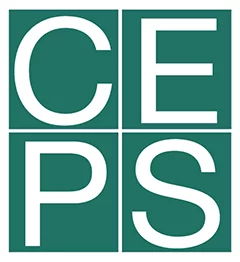Short time-work (STW) schemes have proved to be the ace card in member states’ response to the social and employment crisis induced by the Covid-19 pandemic. In mid-May 2019, almost 50 million workers (or 26.8% of the European workforce) applied for the support of STWs schemes.
The highest share of workers in STW schemes was registered in France (with 11.3 million, 47.8% of the workforce); Italy (with 8.3 million, 46.6% of the workforce): Germany (10.1 million, 26.9% of the workforce); and Spain (4 million, 24.1% of the workforce).[1]
While these numbers are likely to increase, they already exceed the number of STW allowances that were paid out during the 2008-09 crisis. In the third quarter 2009, Italy, Belgium, and Germany – the countries with the highest coverage of STW schemes in Europe – counted a total of 6% of all workers under such schemes. At this time only 12 member states had STW schemes in place; nine introduced them between 2008 and 2009 (Bulgaria, Czech Republic, Hungary, Latvia, Lithuania, the Netherlands, Poland, Slovakia and Slovenia). Another reason for the disparity in member states’ coverage is that in 2008-09 short-time work schemes were of limited scope and mainly applied to workers with open-ended contracts.. Conversely, as soon as the pandemic took hold, member states modified the institutional design of STW schemes to cover workers who were not formally included, to loosen or speed up access to the instruments, raise subsidies, extend the maximum duration of STW and protect workers against dismissal once the subsidy ended.
According to the 2020 country stability programmes, the budgetary impact of the STW schemes and similar discretionary measures adopted to face the Covid-19 is significant. In Italy and France, the expenditure amounted to 1.1 % of the GDP and in the Netherlands 1.8%.[2] The budgetary effort, however, affected member states asymmetrically; they entered the pandemic with different fiscal positions and highly indebted countries had less fiscal space to face the challenges of the crisis than less indebted ones.
The proposal for a Support to mitigate Unemployment Risks in an Emergency (SURE), despite some limits, represents a first step towards a European job insurance scheme that helps to preserve employment in firms temporarily experiencing weak demand and to cushion the social consequences of mass redundancies. Furthermore, the counter-cyclical nature and a significant volume of resources mobilised make SURE Europe’s first step towards a EU fiscal capacity stabilisation instrument.
SURE remains, however, a temporary mechanism, not only in the temporal sense, but also because its existence depends on the evolution of the Covid-19 crisis. From a legal perspective, indeed, SURE is based on Article 122(2) TFEU, which allows the European Union to provide financial assistance to member states in difficulty due to exceptional circumstances beyond their control. In the legal provisions of SURE, such conditions are clearly specified as being Covid-19 related. This means that if another crisis were to occur in the future, SURE would not be in the EU’s toolkit to provide immediate support to the countries in need.
One key reason for this is that the capacity of the EU to provide member states in need with financial support under SURE ultimately relies on the guarantees offered by all individual member states in this specific context.
In order to transform SURE into a permanent mechanism (yet still for temporary support) the Commission should be able to access such guarantees without waiting for the ad hoc consent of each and every member state.
One realistic option to do so is to frame SURE as a special instrument outside the MFF ceilings under Article 175 (3) TFEU. The activation would still be triggered by the request of a member state facing an exceptional and unexpected crisis that led to a steady rise in expenditure for STW schemes and similar measures. Such a request would still be submitted to the Commission to then propose a financial assistance agreement to the member state in need, which would be finally formally approved by the Council with a qualified majority vote.
Two examples of existing instruments based on Article 175(3) TFEU are the European Solidarity Fund and the European Globalisation Adjustment Fund, which are special instruments outside the Multiannual Financial Framework (MFF) and provide support to member states in exceptional circumstances (e.g. natural disaster or large-scale redundancies). Both these instruments, however, provide grants, while SURE offers loans.
A better comparison to appreciate SURE as a permanent instrument is therefore the European Investment Stabilisation Function (EISF), proposed by the Juncker Commission in 2018, though never adopted. Similar to SURE, EISF was designed with the possibility for the Commission to offer back-to-back loans to countries facing asymmetric shocks they could not manage on their own. And like the EISF, SURE would operate under the “margin available under the own resources ceiling for payment appropriations” (Regulation 407/2010).
At the moment, two other lending programmes operate under the same scheme, the Balance of Payments assistance facility and the European Financial Stability Mechanism. As both cover the maximum amount of own resources the EU may raise in one year (1.20 % of the EU’s GNI in the current MFF 2014-20), in the case of a permanent SURE, an increase of the own resources ceiling should be envisaged.
All this should be possible. The Commission has already expressed its intention to build on SURE to propose a permanent instrument, and the European Parliament has long given its support for a loan-based stabilisation capacity within the MFF. No strong opposition should come from member states because, as the current crisis shows, any country can find itself in trouble and benefit from SURE.
[1] Data retrieved from Müller and Schulten (2020)
[2] Data retrieved from EC assessment of stability programmes, available here.


